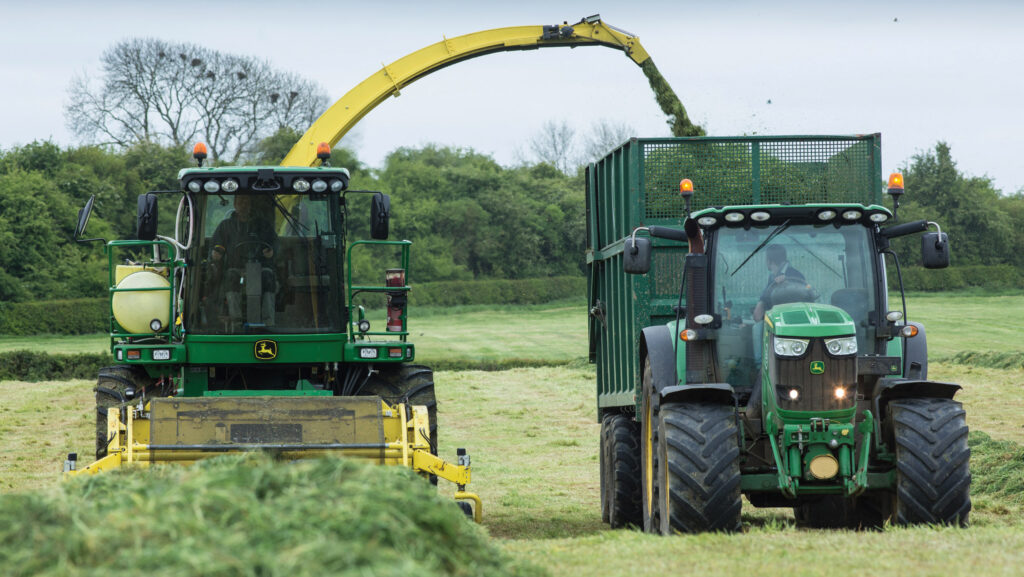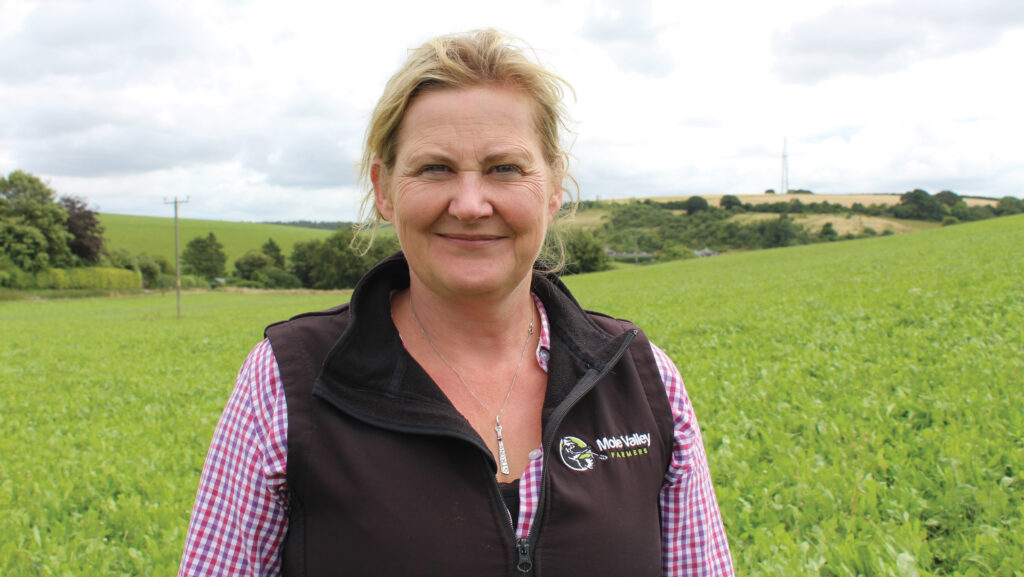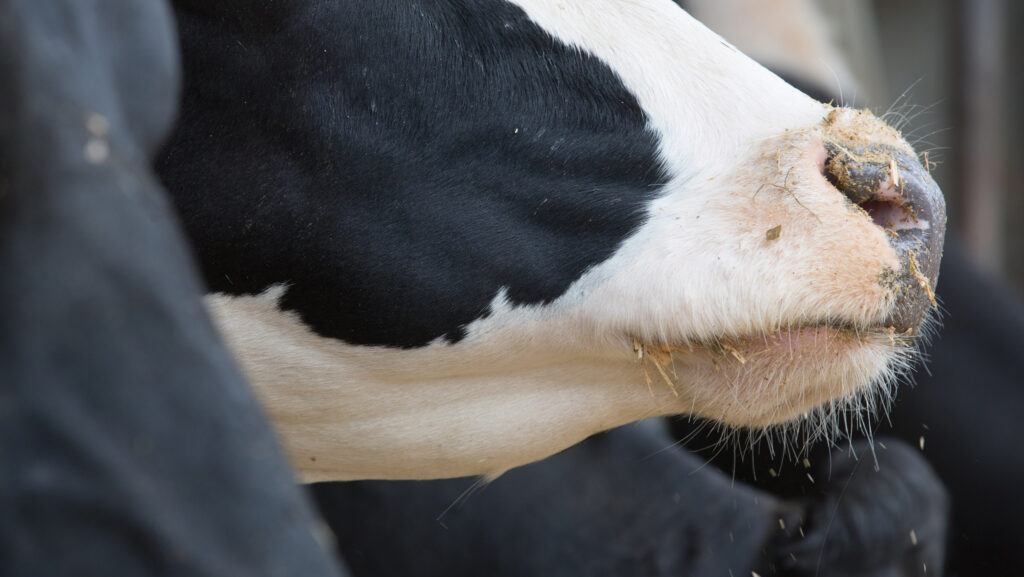6 tips for managing this year’s first-cut silage
 © Tim Scrivener
© Tim Scrivener Slurry stores are full and forage stocks are running dangerously low on many farms. While grass is generally growing well, many fields remain vulnerable to damage by poaching and machinery.
Mild but largely dull conditions are only adding to a hugely challenging start to this year’s silage-making season after such a wet winter.
See also: 8 ways to produce award-winning silage
“Soils have had a hell of a lot [thrown at them] this winter – and sometimes going into the winter as well,” says Lisa Hambly, head of grassland and forage agronomy at Mole Valley Farmers.
Fields waterlogged by record rainfall are now drying out, but where farmers have tried to get out with fertiliser or slurry, they have often got into difficulty, she adds.
And where stock have been outwintered, farmers may not have been able to roll ground, as they normally would, to minimise soil contamination of grass ahead of silage-making.
Lisa offers her tips on how to manage first-cut silage this year.
1. Timing
“If fields are ready to cut, you can get on them and the grass is nitrate-free, go ahead, as they are not going to improve,” she says. “People say they want the crop to bulk out, but you’re losing a lot of quality that way.
“Grass is growing like stink now, soils are warm, and you could get a cut in [now] and another before the end of May. That will also massively increase quality. If you leave it [first cut] until the third week of May, the grass will have been there since last September if it hasn’t been grazed and the quality will be poor.”

Lisa Hambly © Mole Valley Farmers
2. Pre-cut grass test
Wet conditions have prevented many farmers from applying slurry or fertiliser recently, so most fresh grass test results Lisa is seeing are well within the range for nitrates.
She advises all farmers to test fresh grass, especially if their slurry has not been analysed. Results are usually back within 24 hours and will show whether nitrate levels are sufficiently low for cutting. When moderate, a silage additive is advised, or if nitrates are too high, grass should be retested in seven to 10 days.
“Last year, all was going well, then we had a cold spell and the grass wasn’t taking up nitrogen,” she says. “It is being used rapidly now.”
Results are also showing that sugars – which were low last year, at about 10% – are even lower this year, averaging 8%. This is down to a lack of sunshine and a dilution effect, as crops are so big. “Sugars turn into lactic acid to help fermentation in the clamp,” she explains. “Silage with sugars below 10% are at a higher risk of poor fermentation.”
Good fermentation is also needed to preserve as much protein as possible and so reduce the need to buy in extra protein to balance the diet, she adds.
3. Cutting height
Crops are looking stemmier than usual for first cut, making them higher in fibre. In addition, soil contamination is a potential issue because of the amount of rain splash on crops. There is also a lot of dead material in the bottom of the sward, which is best not brought into the clamp.
Lisa advises risk management: “For new leys, aim for up to 9cm cutting height, especially as there’s a higher risk of soil contamination because of how open they are. For others, aim for 6-7cm. If cutting height is a bit higher than usual, you’re not losing out as growth has been so good.
“In fact, I’d always say 6cm [for these], because a lot of hybrids in particular have got higher growing points now, and if we keep cutting off the growing point, the plant has to go into its root reserves to try and regenerate. If it turns dry, you want the root to have as much in reserve as possible to sustain and grow right through the season.
“Even though the pressure is on now, you don’t want to affect your subsequent cuts – we want maximum quality and quantity in every single cut throughout the season.”

© Tim Scrivener
4. Chop length
If grass is drier than 30%, Lisa advises setting the chop length at 1.5-2.5cm to improve consolidation, unless it is being used as part of a ration with a high proportion of maize. In such cases, she says, chop length should be increased to ensure sufficient effective fibre in the diet.
If grass is wetter – 20-30% dry matter (DM) – consider a chop length of 2.5-5cm: “Young, lush grass low in fibre is more prone to slippage, so consider a chop length of 5cm to help hold it in the clamp,” she adds.
5. From cutting to clamp
Crops are likely to be heavy and will take quite a bit of wilting; the quicker this happens, the less the deterioration in nutrients. The ideal is five hours to chop, ted and pick up, says Lisa. “If you don’t usually ted, consider borrowing from a neighbour or using a contractor if you’re worried about potential losses.
“If you set the cutting height a bit higher, you’ll lift the grass slightly off the floor and create a drying rack that air can get underneath to help dry it. And if you’re spreading it out more, you’ve got more chance of drying quickly and sugars being utilised, rather than continued fermentation out in the field.”
6. Additives
If there is any year to use an additive to make the best-quality forage possible, this is the one, given the range of risk factors, says Lisa.
“If you are really trying to get 30% DM, then you won’t have a problem with a standard lactobacillus additive with its high number of bugs,” she advises. “Make sure it is approved, good quality, and tested on UK crops.”
She adds that the mild conditions mean clover is growing earlier than usual. This will also affect decisions about use of additives. “We have never supplied as much clover as we did two years ago when fertiliser prices were high, so there is potentially a lot more clover going into clamps.
“This is fabulous because it means higher protein – but clover is more challenging to ensile. Walk the crop and see what’s there. Clover is not high in sugar like ryegrass, so it wants to [increase the pH] in the clamp.
“You might test and find the pH is low, but clover keeps buffering the clamp back up, making it unstable. If you have more clover than before, you need to use a silage additive to dominate the fermentation.”
Fertiliser timing
- Choose your target cutting date and work backwards to when you can apply fertiliser, allowing for uptake of 2.5kg nitrogen/ha a day
- Grass responds twice as well to fertiliser applied in April and May than in June and July
- Apply fertiliser immediately after first cut: yield of second-cut silage will drop by 2% for every day this is delayed
Source: Graham Ragg, senior agronomist, Mole Valley Farmers
